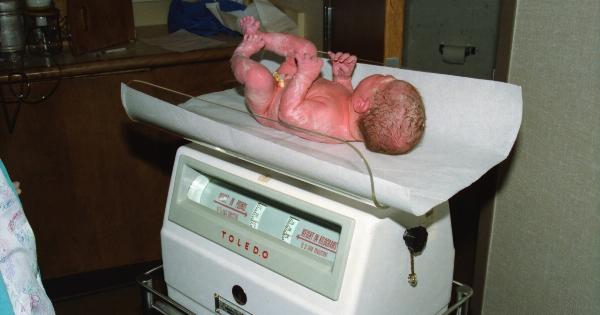When it comes to the weight of a baby at birth, there are several factors that contribute to it. One of the most significant influences is genetics. The genetic makeup of the parents plays a crucial role in determining the weight of their baby at birth.
In this article, we will explore the role of genetics in determining a baby’s weight and how it impacts their overall health.
Understanding Genetics and Inheritance
Genetics is the study of genes, heredity, and variation in living organisms. Our genes are segments of DNA that carry instructions for the development, functioning, and reproduction of our bodies.
These genes are inherited from our parents, and they shape various traits and characteristics, including weight.
When it comes to weight inheritance, both parents contribute to the genetic makeup of their child. Each parent provides an equal number of chromosomes, which contain the genes responsible for various traits.
These genes can influence the baby’s weight, metabolism, and body composition.
The Role of Genes in Baby’s Weight
Genes not only determine physical characteristics like eye color, hair color, and height but also play a crucial role in determining the weight of a baby at birth.
Certain genes are associated with higher birth weights, while others are associated with lower birth weights.
A study published in the journal Obesity Research found that genetics accounted for about 60% to 80% of the variations in birth weight. This suggests that a substantial portion of a baby’s weight can be attributed to inherited genetic factors.
Genes and the Prenatal Environment
While genes play a significant role, it is important to note that they interact with environmental factors throughout pregnancy.
The prenatal environment, including the mother’s diet, lifestyle, and overall health, can influence how genes are expressed and, consequently, the baby’s weight at birth.
For example, if a mother has certain genetic variations related to metabolism or nutrient absorption, but maintains a healthy diet and engages in regular exercise during pregnancy, it can potentially mitigate the impact of those genetic factors on the baby’s weight.
Maternal and Paternal Influence on Weight
Both the mother and the father contribute to the baby’s genetic makeup, and therefore both play a role in determining the baby’s weight.
Maternal genes are especially influential during the early stages of development, as they are involved in the formation of the placenta, which provides the necessary nutrients for the baby’s growth.
However, paternal genes also play a crucial role. Studies have shown that babies inherit more genetic variations related to body composition and weight from their fathers compared to their mothers.
This highlights the importance of considering both parental influences when analyzing the genetic factors contributing to a baby’s weight at birth.
Genetic Disorders and Birth Weight
In some cases, genetic disorders can affect a baby’s weight at birth. Certain genetic conditions can lead to low birth weight or excessive weight gain during pregnancy, ultimately impacting the baby’s overall health.
For example, Prader-Willi syndrome is a genetic disorder characterized by weak muscle tone, feeding difficulties, and poor weight gain in infancy. Babies with this syndrome typically have a lower birth weight compared to average.
On the other hand, conditions like Beckwith-Wiedemann syndrome can cause excessive growth and higher birth weight.
Interplay Between Genetics and Lifestyle
While genetics play a crucial role in determining a baby’s weight at birth, lifestyle factors can also significantly impact the outcome. A healthy lifestyle can help counteract certain genetic predispositions and promote a healthy weight.
Expectant mothers are advised to maintain a balanced diet, rich in essential nutrients and vitamins, to support their baby’s growth. Regular physical activity during pregnancy can also help regulate weight gain and promote overall well-being.
Implications for Long-Term Health
Baby’s weight at birth is not only important in terms of immediate health but also has long-term implications. Research has shown that birth weight is associated with the risk of developing various diseases and conditions later in life.
Low birth weight has been linked to an increased risk of cardiovascular disease, type 2 diabetes, and obesity in adulthood.
On the other hand, higher birth weight has been associated with an increased risk of certain cancers and metabolic disorders later in life.
Conclusion
Genetics undoubtedly play a key role in determining a baby’s weight at birth. The genetic makeup inherited from both parents influences various factors related to weight, metabolism, and body composition.
However, it is essential to remember that genetics do not act alone. Environmental factors, such as the prenatal environment and lifestyle choices, can interact with genes and impact the baby’s birth weight.
Understanding the interplay between genetics and other factors can assist healthcare professionals in providing appropriate care during pregnancy and early childhood.
By considering genetics alongside other influences, we can better understand the complex mechanisms behind a baby’s weight at birth and help promote healthier outcomes.




























